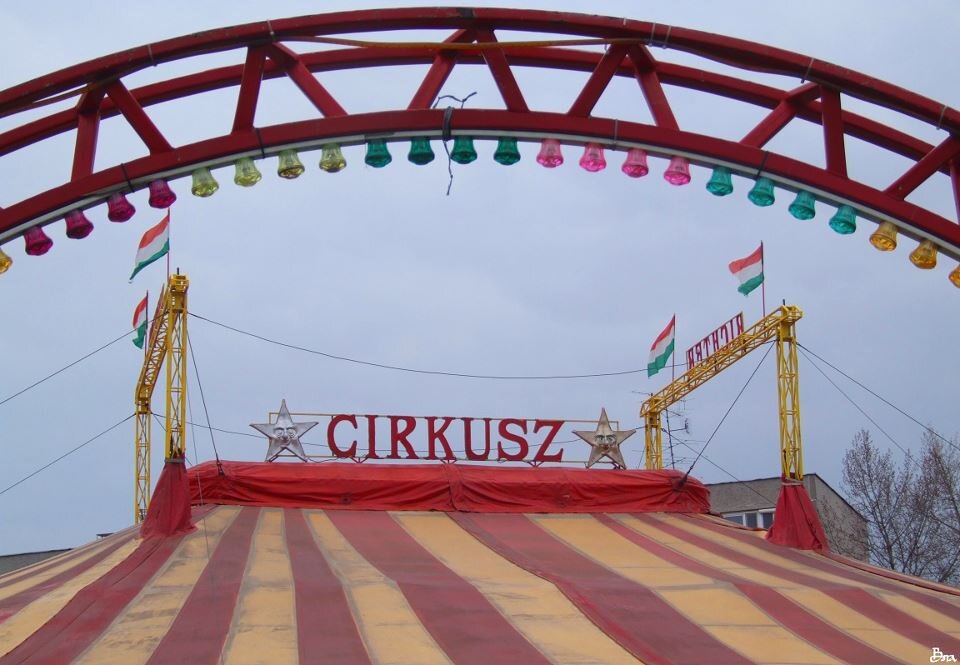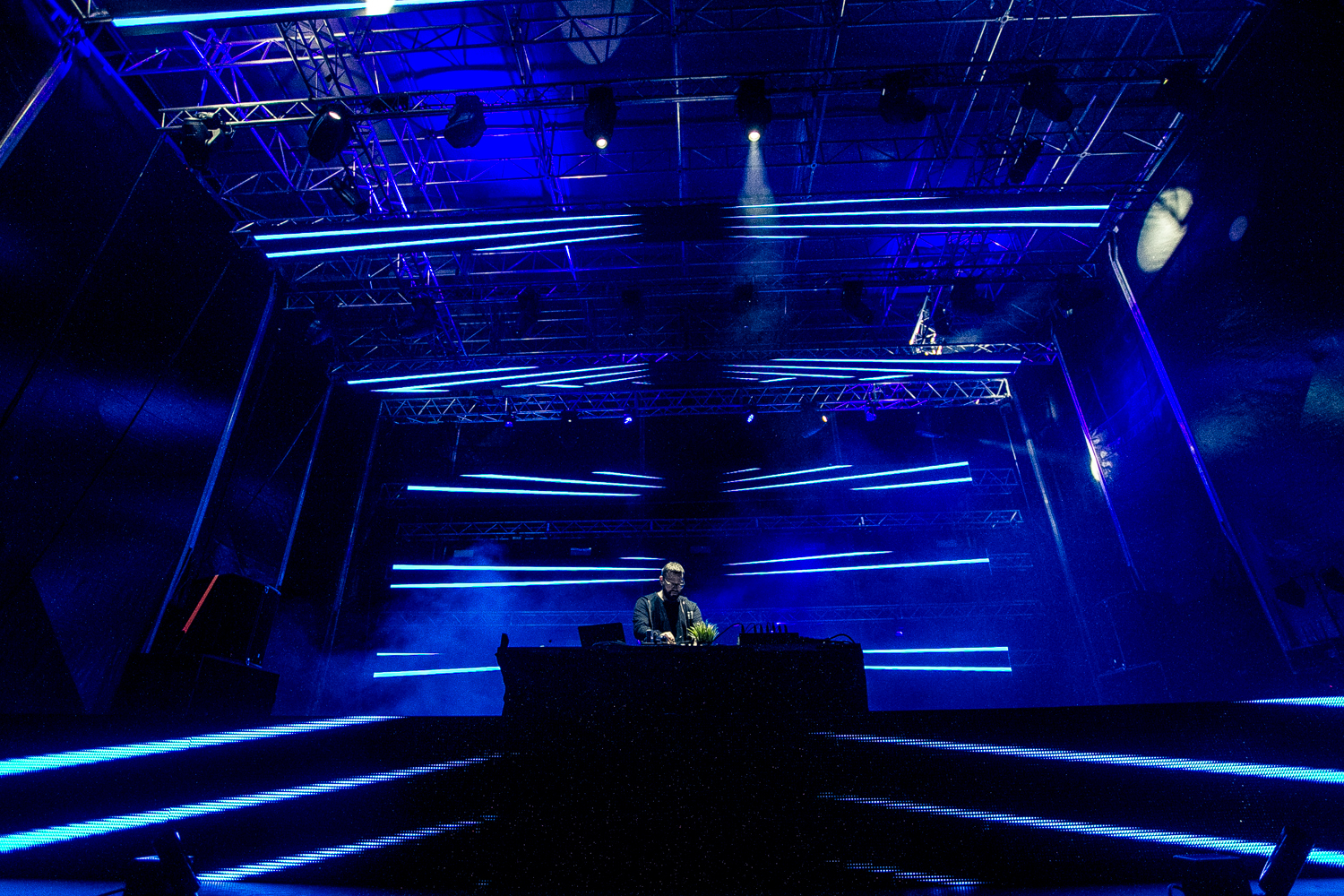“Five-eight years ago we performed every night in front of 100-150 people, we even had guests that came to see us regularly, but this summer we’ve only had an audience of 15-20 on most nights. Our performance meets the same high standards as before, but 100 people laughing create a totally different atmosphere than 15,” says 65-year-old Sándor Richter, the patriarch of the family circus.
Tickets cost 1,000 HUF, which is not that bad for a 90-minute show with exotic animals, jugglers, knife throwers and acrobats defying gravity up in the air. But 15-20 guests per day means that there’s only about 20,000 HUF coming in each day, which has to cover the pay of the six families performing at the shows, as well as the rent, the feed for the animals and the utilities. “This year was horrible, not only did we not break even, we are in the red,” adds Sándor Richter. This is partly why only family members are employed: “You couldn’t tell a stranger that only 20 people came today, so the money is not enough for more than a few sandwiches for your kids.”

Those working in Richter Circus say the reason why people don’t come to see them is because they have no money to spend on such things, but it’s also possible that the elephant grazing in front of the tent of Maximus Circus, camped on the opposite side of the road, was more effective in attracting guests. The neighbouring circus has also struggled with waning audience numbers, but they had at least 60-80 people come in every night. No matter how you look at it, the popularity of circuses at Balaton has faded over the last ten years – this form of entertainment is nowhere near as big of a hit as it was before the change of regime.
What is life like in a travelling circus?
65-year-old Sándor has a lot of fond memories from his youth of life in the travelling circus. He was born into a prestigious circus family with more than 200 years of history, and he’s lived in a campervan moving from village to village all his life. The way he managed to get an education was quite unusual as well: every morning he went to school in the village where his parents were performing that night, he got a stamp from the teacher at the end of each day, and he took an equivalency exam at the end of the year. As early as age 17, he was already dedicated to the circus, knowing that he was going to live his life travelling the country with his company. He learned the ropes of taming and training wild animals and performing acrobatic tricks from his father and uncles.

“When we arrived in a village, we were treated like royalty. We were called maestro. But we showed our respect for the audience too: I never took the stage without a smile; I was never in a bad mood when I had to do a show. It’s true even today when I perform in front of a mere 20 people. The manège is sacred, that’s what my father taught me.”
How does one become an acrobat?

Sándor still performs in the circus; he has an act in which he balances on his head – quite an impressive feat considering his age. He continues to practise every day despite getting regular back- and neck aches. “There’s no such thing as being born an acrobat; you become one by practising a lot,” adds Richárd Richter, Sándor’s nephew.

“I started juggling with two hoops when I was five years old. I practised every day, and by the time I was ten, I’d learned to do it with three. It was the same with summersaults in the air. I had to do it with a safety cable five thousand times, and I fell on my face a lot before I could do it perfectly in the air without a safety net.”
According to Richárd, practising every day is the basis of his profession, and it’s what gives the acrobats a sense of safety as well. “When I was in my twenties, I had an acrobatics act with my brother: he had to do a double summersault and land on my shoulders. It was tricky because I had to grab his legs at the right moment: if his momentum was too strong when I caught him, he fell, but if I had reached out too late, he could have broken my neck. You can imagine how many times we had to practise it, and how much effort it took for the both of us to be in perfect synch. The same is true for the knife throwers: they have to be very precise, otherwise the knife will injure their partner.”
Thankfully, Richter Circus has had no serious accidents so far. On time when Richárd was doing his Indiana Jones act, the baby crocodile bit into his finger a little bit more vehemently than usual, but he didn’t suffer any permanent injuries. They worry much more about the audience, as their tent is not the most massive specimen. They always make sure to check the news, and cancel the upcoming show if there’s a storm approaching.
What happens to aging acrobats?

Richárd says the fact that 65-year-old Sándor is still capable of balancing on his head is quite exceptional. “Most acrobats perform tricks between the ages of 20 and 30, and later, when they can no longer maintain their fitness, they learn how to juggle or train animals, eventually taking over the acts with the small dogs or becoming clowns if they suit the part.”

Circus folks unfortunately cannot expect to have a peaceful retirement: the pension they are entitled to is so insignificant that if they didn’t travel with the rest of the family, who are still active, they couldn’t make ends meet on their own. For example, Sándor lives in a campervan to this day. “Sadly, I couldn’t save up for a flat when I was young; I could only afford a campervan. In winter, I park it in the garden of a relative, put the animals in stables and heat the van with a gas tank.”
The long and sad winter
Circus season last from March to November, with only a handful of invitations to perform at sports halls during the winter. “If we cannot save enough money in summer for the winter months, we have to prepare ourselves for a long and sad winter. I can make do with two meals a day, but I cannot tell the animals there’s nothing to eat,” says Sándor in a somewhat bitter tone, adding that money didn’t grow on trees in the old days either, but they were usually able to put enough aside for the bleaker winter months, and to buy new animals or even give the tent a facelift.

“Extra expenses can easily arise when it comes to a circus. For example, you may have to buy a hundred small horses, but you may only be able to train three or four of them for an act. You have to sell the rest, but you’ll only get a fraction of the original price,” says Richárd.
Will the kids also join the circus?
Even if traditional circuses are no longer the centres of popular entertainment, and the lives circus workers lead are harder and harder, Sándor Richter and Richárd Richter, both of whom were born into the circus dynasty, can hardly imagine a different way of life.





